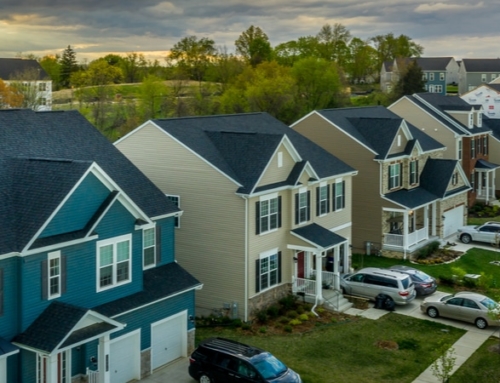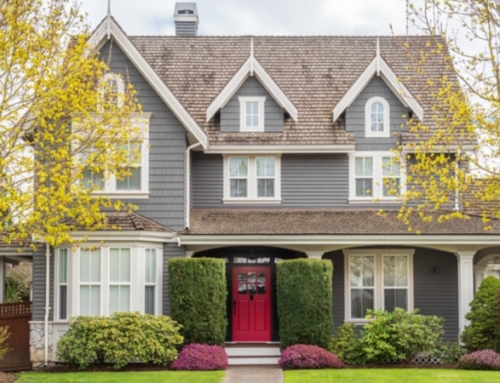When my husband and I bought our house nine years ago, our home inspector, who also happened to be an architect, wedged himself into the crawlspace under the living room to take a look.
What he found surprised him. Underneath a porch that he guessed had been added in the early 1900s, he found yellow brick, which was commonly used to build homes in the 1880s.
“I think your house is more than a hundred years old,” he told us.
I was reminded of how our home looked when we bought it when I looked at the drawing of the modest two-story home typical of farmhouses built before the turn of the last century, on the cover of the National Association of Home Builders “Century of Progress.”
This booklet which provides snapshots of America’s new housing stock in 1900, 1950 and in 2000, and explains the changes in room sizes and configuration as well as dramatic shifts in building quality and conveniences during the 20th century.
While the booklet examines the demographics that drive new construction, it takes great pains to point out that the way we live today is quite different than the way we lived in generations past.
For example, the booklet notes that in 1900, the U.S. population was a scant 76 million people, of which just 40 percent lived in urban areas. This reflects the pre-suburban, agrarian-based communities that provided the meat and bread for American dinner tables. By 2000, the U.S. population had grown to 270 million, of which 76 percent lived in urban or suburban areas.
According to the booklet, “in 1900, well over 20 percent of the nation’s population lived in crowded units, with entire families often sharing just one or two rooms. Most existing homes were small, rural farmhouses and lacked the basic amenities, such as complete plumbing and central heat.”
Inside, the floor plan of the 1900s farmhouse looks surprisingly familiar to the 1880s farmhouse we bought, except the drawing shows no closets or bathrooms. The average size of the home was 700 to 1,200 square feet.
In our farmhouse, before the two-story porch addition of 1905, the first floor consisted of just three rooms: A living room, dining room and kitchen. The second floor was a mirror image of the first floor, presumably three bedrooms.
Sometime in the early 1900s, perhaps when the first and second floor porches were added to my house, the stairway was moved to the front hall to make room for a half bath on the first floor and one full bath on the second floor. Two tiny coat closets were fashioned out of leftover space next to the half bath. The second floor featured just two closets – well, one closet and one closet that was really a leftover space between the roof and the wall of the bigger bedroom.
Fifty years later, the Housing Act of 1949 was passed, establishing as a national goal the creation of a decent home and a suitable living environment for every American family. The Act designated the private sector as a means of achieving the goal.
That Act was the beginning of a long-term governmental effort to find solutions to major obstacles to homeownership. In the next twenty years, various federal acts created FHA-insured and VA-guaranteed housing, created Fannie Mae and Freddie Mac to pool mortgages and sell interests in the pool to private investors, and eliminate discrimination in housing due to race, color, religion or national origin.
By the 1950s, homes were being built with bathrooms and kitchens, closets and a huge unfinished second floor for “someday” expansion. The typical house was 1,000 square feet, and developers threw them up by the thousands, in order to give returning World War II veterans a place to live.
By the year 2000, newly-constructed homes had three or four bedrooms, two and a half baths, built-in washing machines and dryers, master suites, attached two or three car garages, built-in fireplaces, and many upgrades like marble or granite, and central air.
But perhaps the biggest changes in housing in the last 100 years center around the rate of homeownership and the actual price of homes.
In 1900, just 46.5 percent of the population owned their own homes. Many of those lived on farms, and owned property that had been in the family for generations or had been homesteaded. Urban residents were often renters. The cost of a new home in 1900 was less than $5,000, but mortgages were an unknown. If you wanted to buy a home, you paid cash for it.
Fifty years later, the number of people owning their own home had grown to just 55 percent of the population. The cost of a new home was $11,000, or about double what it had been in 1900. The FHA mortgage rate was 4.25 percent and there were a handful of mortgage programs from which to choose.
By the year 2000, the homeownership rate was nearly 68 percent. The average cost of a new home was $206,400. We’ve entered the era of customized mortgages, where a lender can tailor-make a loan to suit your personal financial needs.
In 1999, my farmhouse underwent a dramatic remodeling – a gut job, really – to fix the foibles more than a century of life had wrought, and to put it in shape for the next 100 years.
Who knows what new homes, and mortgages, will look like then?
Note: The “Century of Progress” report is available free of charge at www.NAHB.org (type “Century of Progress” into the search engine box).
June 2, 2003






Leave A Comment